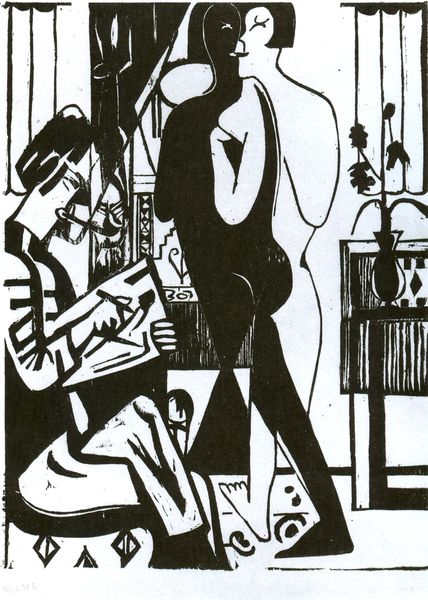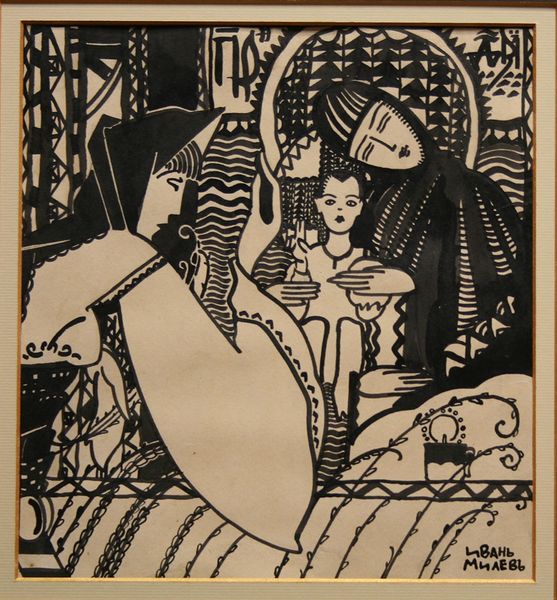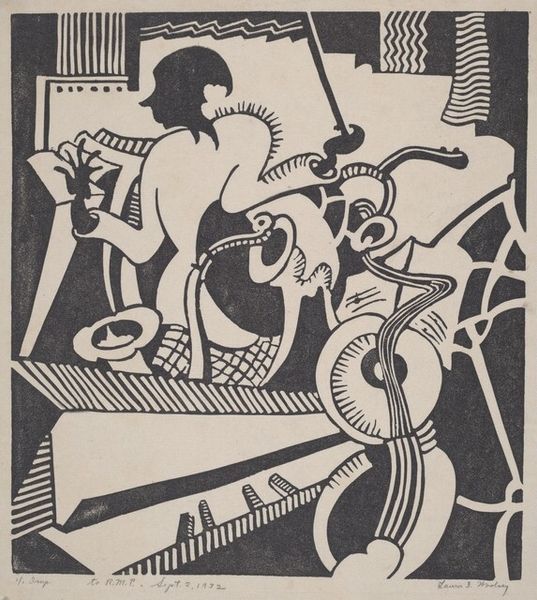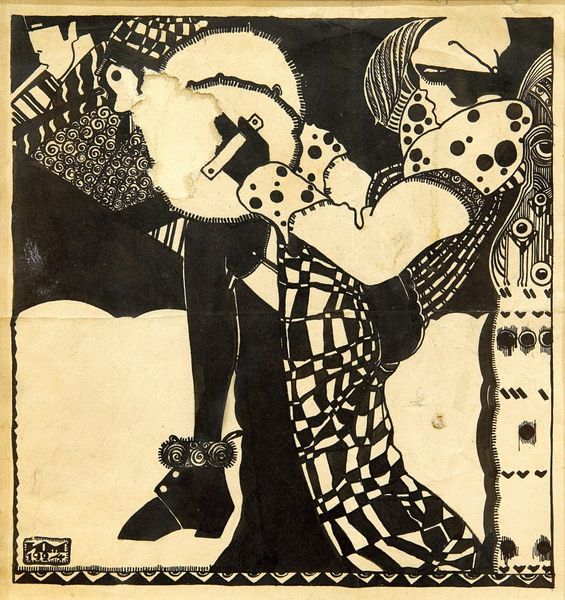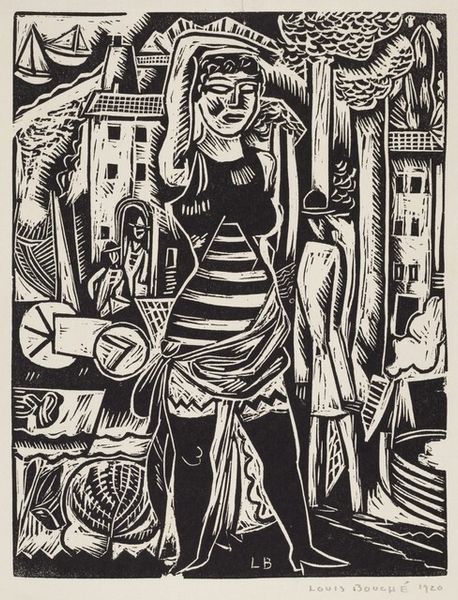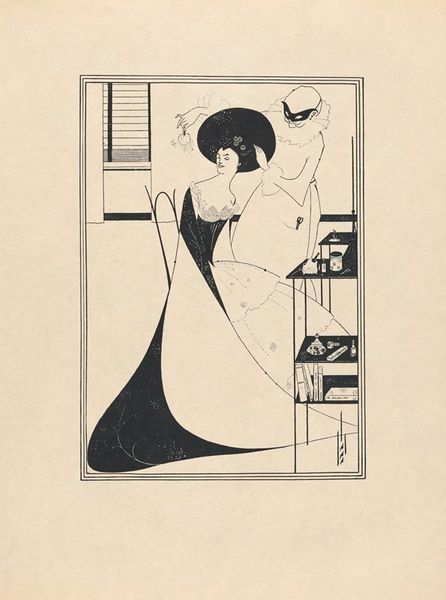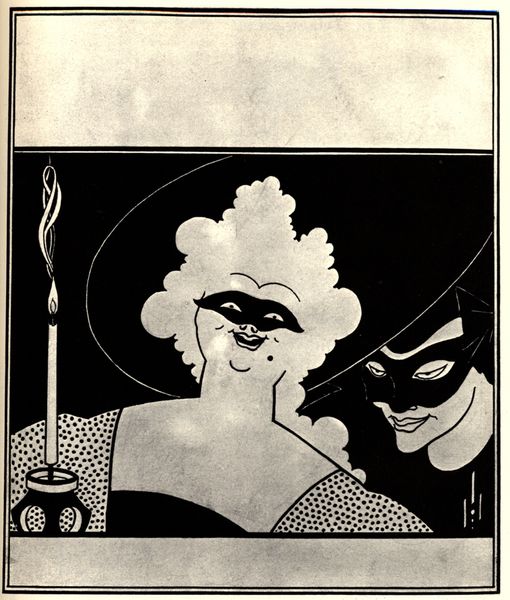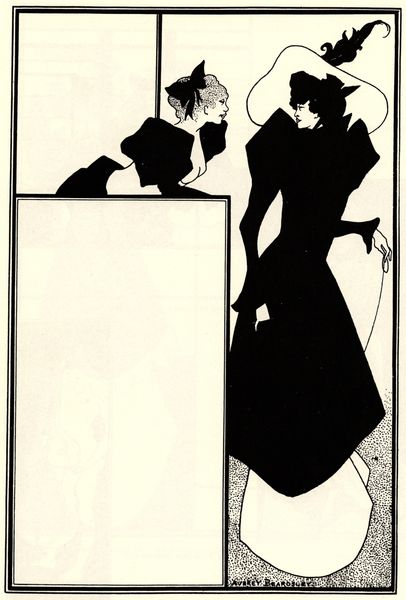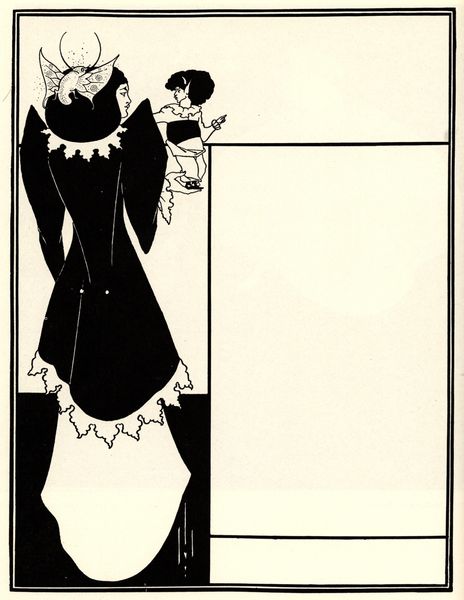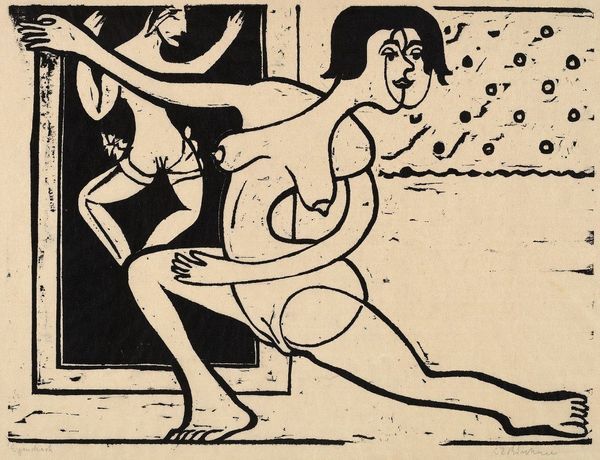
Copyright: Public domain
Curator: Before us is Boris Kustodiev’s “Portrait of Y.E. Kustodieva” created in 1926. It exemplifies the Russian Avant-Garde's experimentation with genre-painting, using, as it does, woodcut for heightened visual impact. Editor: The immediate impact is stark—a contrast between patterned detail and a somber mood. The tight composition feels almost claustrophobic; is the goal here perhaps to show a certain rigidity of bourgeois domesticity? Curator: Perhaps. Kustodiev expertly manipulates line and texture here. Note how the black ink carves out form. The starkness seems less an attempt to create oppression and more to create depth, pushing our engagement from passive reception to analysis. Semiotically, the lines and blocks create visual density. Editor: I see the density too, but that is itself expressive. We should observe that we're looking at this portrait from within the social and political upheaval of post-revolutionary Russia. Can we separate Kustodiev’s choices from what the female figure represents in those complex contexts? I see, particularly, the dog in repose at her side as speaking to her bourgeois ties; the entire setting evokes that privilege. Curator: While it would be imprudent to separate the piece from socio-political realities, there is also the reality of visual form. Observe how the woodcut printing results in thick lines and high contrast that flatten the picture plane. The artist manipulates this effect to create graphic dynamism that seems at odds with any simple reading of "rigidity." Editor: Graphic dynamism, certainly, but directed. The subject's downward gaze draws our eye to the resting dog, itself evocative. Even the "genre-painting" theme should remind us that in the context of 1920s Russia, such portraits took on potent ideological significance. I don't see a purely formal play here, but active participation in conversations of identity and class. Curator: It’s hard to argue with those important nuances and layered points about Kustodiev's social environment. What you’ve touched on allows us to think about the work on both a technical and historically informed level. Editor: Indeed! By attending to the piece through these multiple registers—as crafted object and socio-historical document—I hope we allow audiences to unpack its diverse dimensions, both now and in the future.
Comments
No comments
Be the first to comment and join the conversation on the ultimate creative platform.
